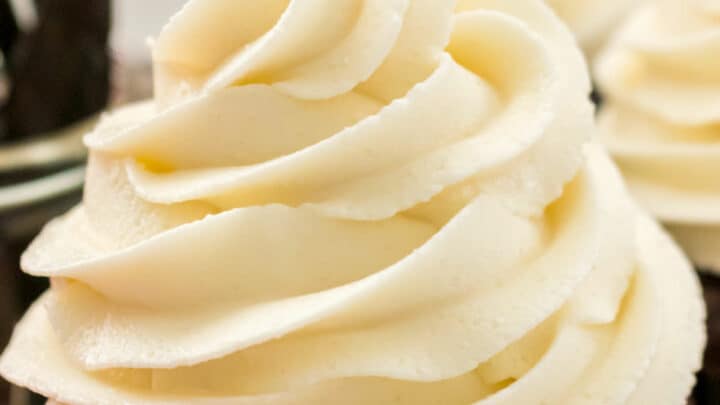Sweeten Up Your Kitchen: The Ultimate Guide to Icing Homemade Treats!
Hello there, sweet-toothed parents and baking enthusiasts! Are you ready to dive into the delightful world of homemade icing? Whether you’re looking to jazz up a batch of cupcakes for your little one’s birthday party, or you want to add a personal touch to cookies for a family gathering, crafting your own icing is a fun, rewarding, and delicious experience!
In this ultimate guide, we’re going to whisk you away through the basics of icing, the various types you can create at home, and some sweet tips to ensure you whip up success every time. So, grab your spatulas, and let’s get that mixer whirling!
Understanding the Different Types of Icing
Before we jump into the stirring specifics, let’s outline the types of icing that you can play with in your kitchen. Each type has its own texture, sweetness level, and use cases, which makes them special in their own right.
- Buttercream Icing: Perfect for piping and spreading, this creamy dream is a combination of butter, powdered sugar, and a splash of milk or cream.
- Royal Icing: Often used for its sturdy finish, this glossy icing, made from powdered sugar and egg whites, is ideal for decorating cookies.
- Glaze Icing: This thin, runny icing is made from powdered sugar and a liquid, such as milk or water, making it perfect for a subtle sweet coating on scones or doughnuts.
- Fondant: This is a pliable sugar paste, often used to elegantly cover cakes or shape into decorative designs.
- Ganache: A rich blend of chocolate and cream, ganache can be poured while runny or whipped for a fluffier texture.
Each icing style brings something unique to the table (literally!), and they’re super simple to whip up with a little practice. So, whether you’re team buttercream or all about that royal icing sleekness, there’s something for every baker!
Buttercream Basics – Where Sweet Meets Simple
Buttercream icing is a staple in the baking world and for good reason. It’s versatile, scrumptious, and the optimal choice for decorating. Ready to try it out? Let’s get mixing!
Simple Buttercream Icing Recipe
Ingredients:
- 1 cup (2 sticks) of unsalted butter, softened
- 4 cups of powdered sugar, sifted
- 2-3 tablespoons of milk or heavy cream
- 1 teaspoon of pure vanilla extract
- A pinch of salt
Instructions:
- In a large bowl, beat the butter until smooth and creamy, for about 2 minutes.
- Gradually add sifted powdered sugar, one cup at a time, mixing well after each addition.
- After incorporating the sugar, the mixture will appear thick. At this point, add your milk or cream one tablespoon at a time until the desired consistency is reached.
- Beat in the vanilla extract and a pinch of salt.
- Continue to whip the buttercream for an additional 3 to 4 minutes on medium speed until it is light, fluffy, and spreadable.
Voilà! You now have a classic buttercream ready to decorate your homemade treats to perfection. But wait – the fun doesn’t end here!
Adding a Dash of Creativity
Once you’ve mastered the basic buttercream, you can let your creative flags fly! Try incorporating food coloring for a pop of color, mix in flavors like almond extract, cocoa powder, or lemon zest for a tasty twist, or fold in finely chopped nuts or sprinkles for extra crunch and fun.
Remember to keep your icing covered with plastic wrap when not in use to prevent it from drying out. And don’t forget to give your little helpers a taste test; after all, that’s the best part of baking, right?
To ensure that your home-baked goodies are not only tasty but also look irresistible, stay tuned for our next section where we will delve into the sweet art of icing application and design tips. It’s time to transform that homemade icing into an eye-catching masterpiece that will be the talk of the dessert table. Decorating with homemade icing not only showcases your baking skills but also adds a personal touch that can’t be found in store-bought treats. Plus, the smiles on everyone’s faces, especially your kids’, will be worth every swirl and dollop of icing you masterfully apply. So, whisks at the ready, and let’s create some sugary magic together!

5 Things Parents Should Know in Preparing Icing for Homemade Treats
1. The Importance of Room Temperature Ingredients
For a smooth and creamy texture, especially when it comes to buttercream, make sure your butter is at room temperature. Cold butter can lead to a lumpy icing, while melted butter may cause the icing to become too runny. If you’re using eggs or dairy in your recipe, such as in royal icing or ganache, bringing these ingredients to room temperature can help them blend more easily and create a consistent texture.
2. Customizing Icing for Dietary Restrictions
Customizable icing is a game-changer for those with dietary restrictions. Nowadays, substitutes for traditional ingredients are aplenty! For vegan icing, consider using plant-based butters and milk. You can also swap out egg whites in royal icing with aquafaba, the liquid from a can of chickpeas, which whips up gorgeously. For a sugar-free option, look into sugar substitutes that are suitable for baking, keeping in mind the conversion rate may differ.
3. The Art of Achieving the Perfect Consistency
Icing consistency is crucial for the end result to be just right. A buttercream meant for piping roses needs to be stiffer than one used to smooth over a cake. If your icing is too thick, add a small amount of milk or water—go a teaspoon at a time. If it’s too thin, more powdered sugar can thicken it up. Consistency can also depend on the weather; humidity might require less liquid, whereas drier climates may need more.
4. Safe Food Coloring Practices
When adding food coloring to achieve that perfect hue, opt for gel-based colors over liquid food colorings. Gels are more concentrated and won’t affect the icing’s consistency. Begin with a toothpick dipped in color and add gradually—you can always put more, but you can’t take it out! Especially for kids’ treats, use food colorings that are safe and free of allergens or harmful substances.
5. Timing Your Icing
An icing’s best friend is timing. Prepare your icings close to the time you’ll use them, as they tend to develop a crust if left out for too long. If you have to make your icing in advance, store it in an airtight container in the fridge (for most types) and bring it to room temperature before use. Additionally, make sure your baked treats are completely cooled before spreading or piping icing to prevent it from melting off.
Mastering these five key elements will undoubtedly up your icing game and make the experience all the more enjoyable. Whether you’re prepping for a special occasion or just having a fun family baking day, these tips will set the foundation for icing success. Don’t be afraid to experiment and most importantly, have lots of fun on your sweet culinary adventure!
With this comprehensive guide in your back pocket, every swirl, dollop, and drizzle of homemade icing will bring your delectable treats to new heights of deliciousness. From the joys of crafting a velvety buttercream to the precision of royal icing decorations, the world of icing is vast but incredibly approachable with the right knowledge.
Remember, practice makes perfect, and every bake is an opportunity to learn and improve. So whether you’re a newbie or a seasoned pro, keep baking, keep creating, and let your love for the craft shine through every frosted masterpiece you create. Here’s to your kitchen adventures and the many sweet moments they bring!
See more great Things to Do with Kids in New Zealand here. For more information see here
Disclaimer
The articles available via our website provide general information only and we strongly urge readers to exercise caution and conduct their own thorough research and fact-checking. The information presented should not be taken as absolute truth, and, to the maximum extent permitted by law, we will not be held liable for any inaccuracies or errors in the content. It is essential for individuals to independently verify and validate the information before making any decisions or taking any actions based on the articles.




